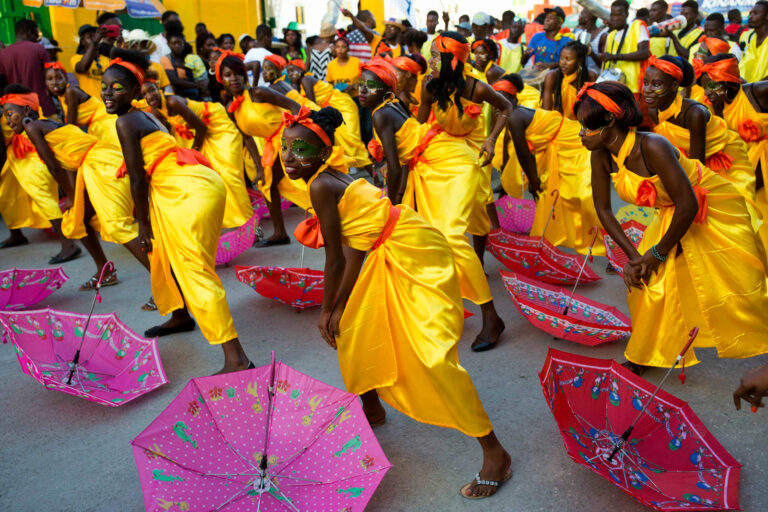This virtual guided tour explores the contested origin histories of brass bracelets, cowrie shells, and glass beads in Yoruba culture and practice. Specifically, this compares both Western scholarly perspectives and those of religious practitioners in order to glean answers to the questions: Where did these objects come from and why are they so important?
Perhaps the preeminent theme of orixá liturgy is hierarchy among the priests and other attendants. And, in most of these religions, a large proportion of the visitors from the other world are identified as either monarchs or slaves.
Șango is a Yoruba god of thunder and lightning with a counterpart in Cuba called “Changó” and another in Brazil called “Xangô.” In each of these locales, the god appears anthropomorphically in the bodies of elegantly arrayed possession priests, but his virile and fiery spirit is just as powerfully manifest in lightning, mortars, rams, tortoises, okra, thunderstones, and the double axe. Through the example of Șango and allied gods around the Atlantic perimeter, this tour explores the unity and the diversity of sacred iconography in diverse countries, as well as the meaning and aesthetics of this prolific Yoruba-Atlantic artistic tradition.
Does religion teach us how to avoid suffering, or how to suffer and transcend? The Afro-Atlantic religions are often sought out by those who are suffering, and offer a philosophy of healing the whole person, with less regard for the Western dichotomy of physical and spiritual. This visual guided tour seeks to explore the following key questions: How are the gods and spirits called upon for healing? How do objects for ritual and healing specifically reflect their ambivalent abilities to both hurt and heal?
This tour aims to explore and analyze musical instruments and dances, as well as their symbolic and religious meanings, from Afro-Atlantic religions Haitian Vodou, Cuban Santería/Lucumí, and Brazilian Candomblé, with special attention to their influence and origin from West Africa and the Yoruba faith. To do this, I examine each object and analyze their symbolic meanings and origins in history and discuss the influences that Santería, Vodou, and Candomblé have had on modern music in the United States, as well as in the Caribbean.
This tour explores how the phallus is represented in the context of Afro-Atlantic religions and the Western world. Through the analysis of some of the gods present in Afro-Atlantic religions it becomes apparent that some artifacts are closely related to the phallus physically, symbolically, and metaphorically.






